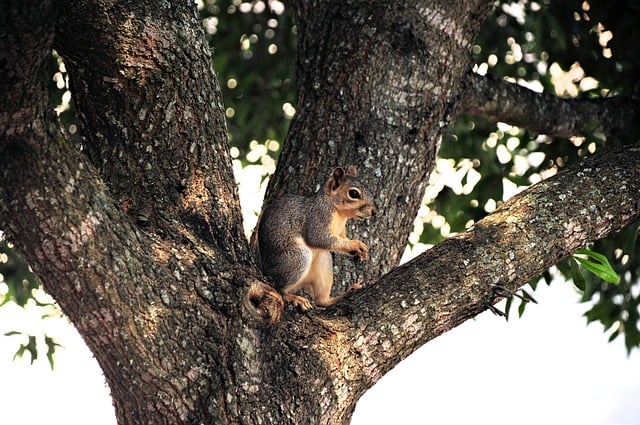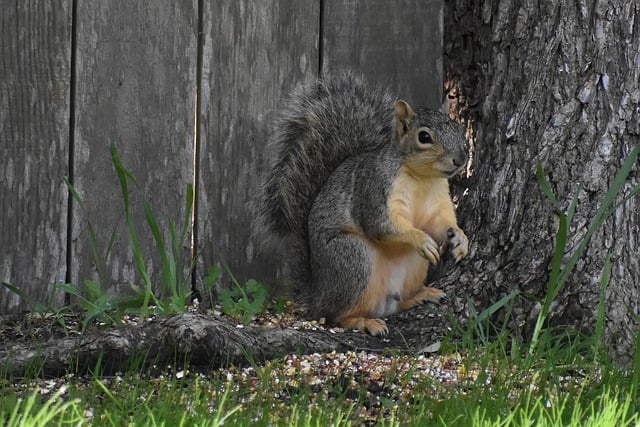Rodent control in Marana and Tucson requires a year-round, strategic approach due to seasonal climate variations. As temperatures fluctuate, rodents' behavior changes, necessitating adaptive pest control measures to maintain cleanliness and safety. In the warmer months, rodents seek cooler areas, prompting indoor or shaded outdoor trap and bait station placement. Bait selection must be species-specific and safe for non-target species and pets. With the onset of fall and winter, rodent activity often increases, demanding refined control measures to manage this uptick. Regular monitoring and inspections are crucial during these periods to ensure traps and baits remain effective. A combination of various trapping methods and careful use of rodenticides, complemented by ongoing evaluations, forms the backbone of a proactive approach to rodent management in the Marana district and Tucson's Sonoran Desert. This method aligns with local regulations and environmental considerations, ensuring responsible and effective year-round rodent control in these areas.
Rodent incursions pose a persistent challenge in Tucson’s Marana area, where the diverse Sonoran Desert climate demands year-round vigilance in rodent control. As seasons shift and local flora changes, so too must our strategies for managing these pests. This article delves into the seasonal nuances of trapping and baiting to effectively safeguard homes and businesses from these unwelcome visitors. Understanding the best practices for bait selection and placement is crucial for maintaining an effective rodent control Tucson regimen, ensuring the security and comfort of Marana’s residents all year long.
- Optimizing Rodent Control in Tucson's Marana Area: Seasonal Adaptations of Trapping and Baiting Strategies
- Effective Bait Selection and Placement for Year-Round Rodent Management in the Sonoran Desert Climate
Optimizing Rodent Control in Tucson's Marana Area: Seasonal Adaptations of Trapping and Baiting Strategies

In the Marana area near Tucson, effective rodent control measures are critical for maintaining clean and safe environments, particularly as seasons change and rodent activity fluctuates. Seasonal variations in temperature and precipitation can significantly influence rodent behavior and habitat selection. To optimize rodent control in Tucson’s Marana region, it is imperative to adapt trapping and baiting strategies accordingly. For instance, during the hotter months, rodents may seek out cooler areas, which could be indoors or in shaded outdoor locations. Consequently, placement of traps and bait stations should focus on these preferred habitats to increase the likelihood of capture or ingestion of bait. Additionally, the type of bait used should be carefully chosen based on the species present and their preference, ensuring that it is both effective and safe for non-target wildlife and pets.
As the seasons transition from the scorching summer to the milder fall and winter months in Marana, rodents may become more active due to a decrease in extreme temperatures. This change in behavior necessitates a review of trapping and baiting strategies to adapt to the higher activity levels. The use of monitoring and inspection will play a crucial role during these periods, as it allows for timely adjustments to the placement and type of rodent control measures. Employing a combination of traps, such as snap traps, live catch traps, and rodenticides where necessary, along with regular inspections of their effectiveness, will help maintain a proactive approach to rodent control in Tucson’s Marana area throughout the year. This seasonal adaptation ensures that rodent control measures are not only effective but also responsible, aligning with local regulations and environmental considerations.
Effective Bait Selection and Placement for Year-Round Rodent Management in the Sonoran Desert Climate

In the arid and varied climates of the Sonoran Desert, including the Marana region near Tucson, effective rodent control requires strategic bait selection and placement throughout the year. Rodent control in Tucson, specifically, must account for the harsh conditions and the adaptability of rodents to survive in such environments. Professional-grade bait stations filled with rodenticides specifically designed for desert rodents are crucial for successful management. These baits should be laced with anticoagulant rodenticides that ensure a humane and effective lethal dose without posing significant risks to non-target wildlife or pets when used correctly.
The placement of these bait stations is as important as the choice of bait. In the Sonoran Desert, rodents seek shelter in areas with abundant food sources and moisture. Therefore, bait stations should be placed near water sources, along walls, and in dark, secluded areas where rodents are likely to forage. Homeowners and pest control professionals in Tucson must regularly inspect and maintain these stations, replenishing bait as needed to prevent infestations year-round. This proactive approach to rodent control in Tucson’s unique desert climate is essential for maintaining a pest-free environment and protecting homes from the damage rodents can cause.
In conclusion, effective rodent control in Tucson’s Marana area requires a seasonal approach that takes into account the unique climate and behavior patterns of local rodent populations. By carefully selecting and strategically placing baits, homeowners and pest management professionals can significantly reduce the presence of these pests throughout the year. The insights provided in this article underscore the importance of adapting rodent control tactics to the specific challenges presented by the Sonoran Desert’s environment. Implementing a tailored rodent management plan is essential for maintaining a safe and healthy living space, safeguarding against the potential damage rodents can cause, and ensuring compliance with local regulations regarding pest control in Tucson.
